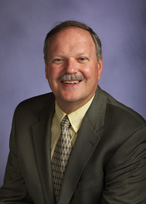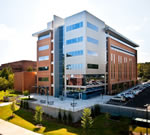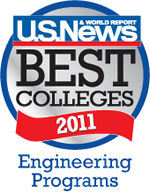UALR Names New Dean of Engineering and Information Technology
 Eric Sandgren, former dean of the Howard R. Hughes College of Engineering at the University of Nevada, Las Vegas, has been named dean of the Donaghey College of Engineering and Information Technology (EIT) at UALR, according to Provost David Belcher.
Eric Sandgren, former dean of the Howard R. Hughes College of Engineering at the University of Nevada, Las Vegas, has been named dean of the Donaghey College of Engineering and Information Technology (EIT) at UALR, according to Provost David Belcher.
Sandgren, who joins UALR on July 1, becomes the second dean of the college since its founding in 1999. He succeeds Mary Good, who will retire as founding dean on June 30.
During his seven-year tenure as UNLV engineering dean, Sandgren introduced five new graduate programs and two new undergraduate programs to help meet regional engineering needs. He tripled the college’s annual research funding from $5 million to $15 million and raised more than $20 million in external support for the college.
“We are delighted that Dr. Sandgren has accepted our invitation to join UALR,” said Belcher. “He brings to this leadership role experience in both academic and industry settings and a demonstrated commitment to building university/industry partnerships. He is thus positioned to advance UALR’s mission-based commitment to the community and to build on the foundational relationships which the college and Dean Good have forged with business, industry, government, and higher education leaders to benefit our city and state.”
Sandgren, who worked in the Las Vegas region with community and government groups to support economic diversification efforts, said he will have these same goals in Arkansas.
 “The college was created as a direct result of the support of the community, and that is what I will build on,” he said. “Together we can make Little Rock and the state of Arkansas an even better place to live by producing a workforce of talented graduates, performing state-of-the-art research and attracting new business opportunities.
“The college was created as a direct result of the support of the community, and that is what I will build on,” he said. “Together we can make Little Rock and the state of Arkansas an even better place to live by producing a workforce of talented graduates, performing state-of-the-art research and attracting new business opportunities.
“The college has a great start, and together we can move forward to create a nationally and internationally recognized college that will be ready to tackle the challenges of the future in engineering and information technology fields.”
Sandgren received a Ph.D. in mechanical engineering from Purdue University, where he also received master’s and bachelor’s degrees in mechanical engineering. Prior to serving as dean at UNLV from 2003 to 2010, he spent six years at Virginia Commonwealth University in Richmond, where he was initially appointed as the founding chair of the mechanical engineering program.
He has also been director of advanced engineering at TRW Steering and Suspension Systems in Sterling Heights, Mich.; an associate professor in the School of Mechanical Engineering at Purdue; an associate director of Mechanical and Aerospace Engineering at the University of Missouri at Columbia; and a staff engineer at IBM Corporation in Lexington, Ky.
He has been a consultant for companies including General Motors, Xerox, McDonnell Douglas, General Electric, and Navistar. His research has been published in more than 50 journals and books.
 Under Dean Good’s leadership, EIT has developed a national reputation for excellence for assembling a first-class faculty, graduating students prepared to succeed in high-paying engineering and technology jobs, and making a positive impact on economic development in central Arkansas.
Under Dean Good’s leadership, EIT has developed a national reputation for excellence for assembling a first-class faculty, graduating students prepared to succeed in high-paying engineering and technology jobs, and making a positive impact on economic development in central Arkansas.
This year, the U.S. News & World Report ranked EIT’s systems engineering program as the top-ranked engineering program at a public university in the South.
The EIT curriculum was developed originally with input from area engineering and technology employers. Major Arkansas employers, including Acxiom, Southwest Power Pool, Verizon Wireless, and SAIC, have supported the college’s programs and students through funding research and facilities and hiring students for both internships and employment.
The college has added several unique programs since its founding, including construction engineering, systems engineering, information science, and information quality, and the number of students with declared majors in the college has increased from 335 to more than 900 students.